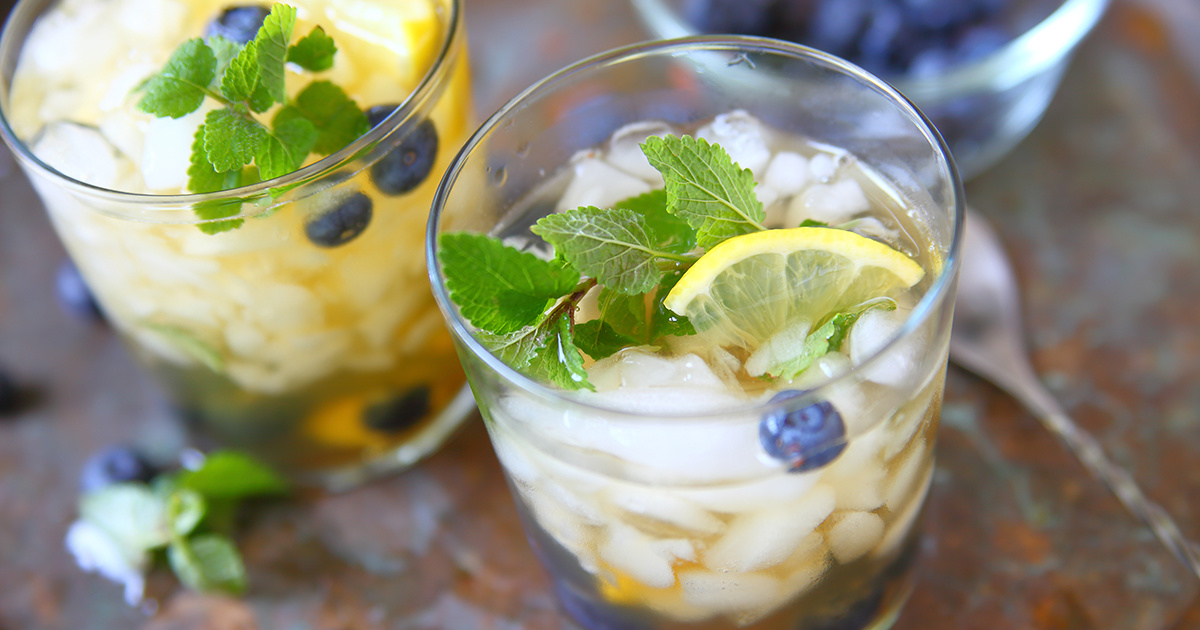

Alice Day / EyeEm / Getty Images
By Brian Barth
Where I come from — the Deep South — iced tea is a religion. Traditionally, most Southern families make it with Lipton tea bags, a little lemon and a lot of sugar. The sole ingredient in those Lipton bags is black tea, which comes from the Camellia sinensis plant. The species was once grown on a limited commercial scale in the South, but today it’s produced primarily in Asia. Gardeners in mild-winter areas can grow the traditional “tea” plant (warning: it’s finicky), but green thumbs everywhere can easily grow perfectly suitable substitutes that combine into a delicious, caffeine-free iced tea.
Use these herbs fresh or dried. Simply steep them in boiling water and refrigerate. Add sweeteners to taste.
1. Mint
There are innumerable mint varieties and most spread like weeds, so you might want to confine your mint to a pot or planter. Spearmint has a sharper flavor, with an abundance of that prototypical clean-feeling minty taste. Peppermint is a little less minty and more vegetal — in other words, it adds more of a “tea” flavor to your tea blend without making it overly minty. It’s worth experimenting with different flavored varieties, such as grapefruit mint and chocolate mint. Mint is a cold-hardy perennial that thrives in moist, partly shaded areas with rich soil.
2. Lemon Balm
Also called Melissa officinalis, this herb combines the slightly bitter flavor of green tea with lemon flavor. It can be used on its own for iced tea (it just needs a bit of sweetener) or in combination with other herbs. Closely related to the mint family, it thrives in partial shade and is prone to spreading throughout the garden.
3. Lemon Verbena
A lemon-flavored herb for gardeners in mild-winter areas, lemon verbena leaves have a similar flavor to lemon balm but are sweeter, with no bitter aftertaste. The plant grows into an upright head-high shrub but can be easily kept smaller in a container so that you can bring it indoors for overwintering.
4. Anise Hyssop
This knee-high cold-hardy perennial bears attractive foliage and large purple flower clusters that are adored by bees, butterflies and other pollinating insects. As the name suggests, the herb has a licorice flavor. It’s a bit much to drink tea made entirely from anise hyssop, but it adds a complementary sweetness when blended in small quantities with mint and lemony herbs.
5. Tea
All green, black and white teas originate from this attractive evergreen camellia bush. Many gardeners find that it fails to thrive unless a narrow set of growing conditions are provided: light shade, high humidity, acidic soil (a pH below 5.5), excellent drainage and high organic matter content. Realistically, most home gardeners harvest white tea (the tiny growing tips in early spring) or green tea (the fully developed leaves later in spring and summer), as black tea involves a lengthy drying and fermenting process.
Reposted with permission from our media associate Modern Farmer.

 233k
233k  41k
41k  Subscribe
Subscribe 